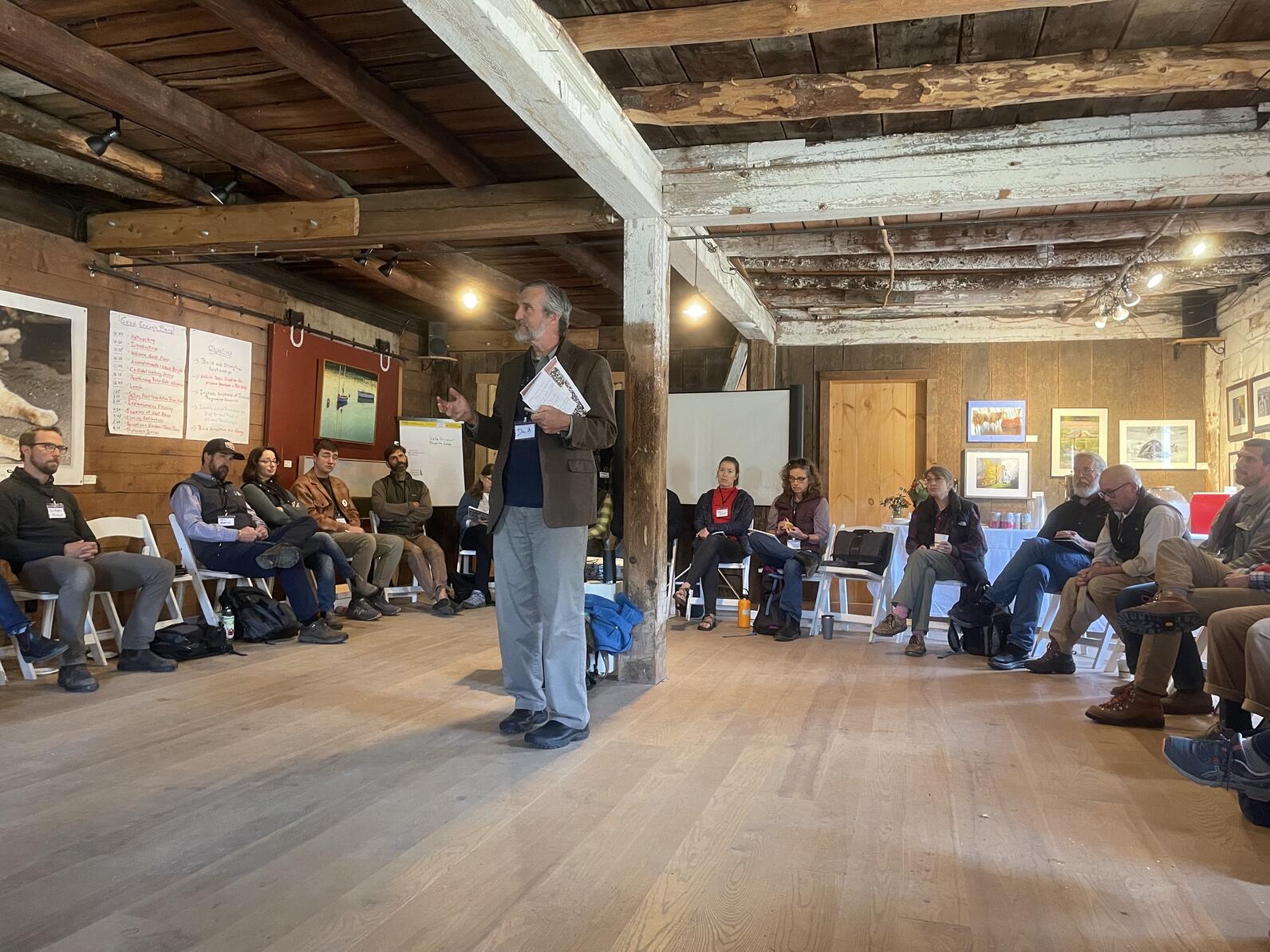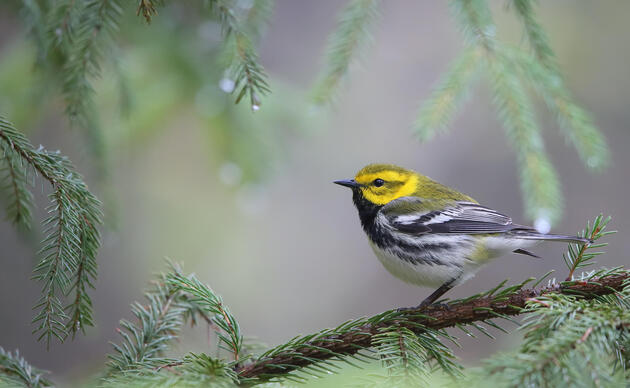
The feelings in the room on September 28th as we kicked off the second annual Vermont Biodiversity Alliance Workshop at Lareau Farm & Forest included “impatient excitement”, “desire for concrete action steps”, “gratitude”, and “anticipation.”
The idea for the Biodiversity Alliance was sparked during an informal gathering of a few of Vermont’s conservation leaders in August 2021, following a presentation from Doug Tallamy, renowned ecologist, and author of Nature’s Best Hope. The participants in that first gathering agreed that high-level collaboration among the Vermont conservation-oriented organizations would achieve more than independent efforts alone. In 2022, the group came together again for a more in-depth workshop, and included more Vermont conservationists in the conversation. They grappled with the scope of the biodiversity challenge facing Vermont and began the work of creating a plan to move forward.
A year later, there have been some important successes but plenty of work remains. This year’s conference discussed both the successes and the remaining work, and identified future priorities for the coming year and beyond. Participants were reminded that while we are currently in a global biodiversity crisis, here in Vermont’s landscape of green hills and silver waters, we are also in the center of a biodiversity opportunity. Finding motivation in that fact, and knowing that no one organization or individual can address the ongoing collapse of biodiversity alone, the group committed to take collective action.
A central issue, discussed by the group, is the need to successfully connect people to the landscape around them and to understand their relationship with nature. For this reason, much of the conversations revolved around the need for a better system of shared communication, and coordinated outreach and education.
Conservation leaders present in the discussion noted that they often feel lonely and isolated in their work but, in looking around the room, I could tell that they appreciated the opportunity to be part of a group committed to a common vision. I was left with a sense of gratitude for the creativity, excitement and commitment to hard work represented by this group.
The motto of the day was “collective impact.” The participating conservation leaders agreed that we need a common vision, shared measurement system, and support for a framework of mutually reinforcing actions in order to be successful. Diving in to the first of these tasks, the group worked to establish a common vision. The vision we developed was simple yet ambitious: “Every Vermonter understands what they can do to support biodiversity in Vermont, has the capacity and resources to do that work, and acts.” With this vision in mind, and focusing on communications and the need to build capacity, we made lists of action items with assignments and due dates.
At the end of the day, the participants were excited and buzzing with anticipation (at least I know I was!). To close the conversation, we passed a white pine stick, naturally decorated by beetles which had carved beautiful patterns into the wood, around the room to allow each person to sum up the day in just one or two words. Perhaps representing the optimism endemic to their field, the participants were overwhelmingly positive, sharing words like “collaboration”, “shared vision”, “exploration”, “complimentary talents”, “passion”, “pace”, “love of Vermont”, “great connections”, “excitement”, “trust and dignity in our work”, “new friend”, “optimism”, “ambitious”, “gratitude”, “community”, “clarity”, and “think big.” Participants also expressed appreciation for the “tension” and “impassioned debate.”
For my part, I left the meeting feeling infected by this sense of optimism, inspired to help advance this mission and excited to launch my new career as an environmental lawyer.

By Alison Choate
Take Action
Sign up for updates about Audubon Vermont's conservation work, get news about our activities and local events, and find out how you can take action to help birds.




